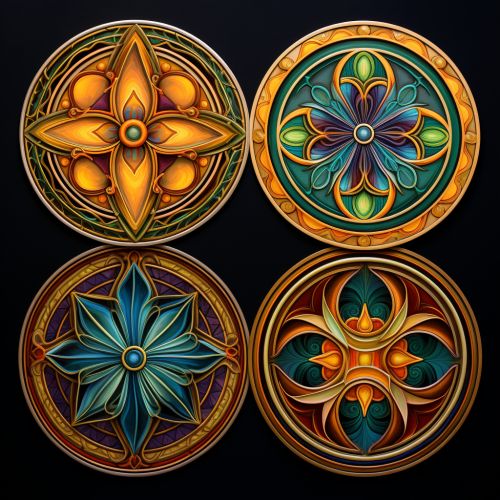Principles of Design
Introduction
The principles of design are fundamental concepts used in visual arts that govern the organization of elements in a composition. These principles, which include balance, contrast, emphasis, movement, pattern, rhythm, and unity, are the building blocks of design that help to create an aesthetically pleasing or intriguing work of art. Understanding these principles, their functions, and their effects can greatly enhance an artist's ability to create effective visual representations.
Balance
Balance is a principle of design that pertains to the distribution of visual weight within a composition. It can be achieved in three ways: symmetrical, asymmetrical, and radial. Symmetrical balance, also known as formal balance, occurs when elements are mirrored along a central axis. Asymmetrical balance, or informal balance, involves different elements that have equal visual weight; the weight is evenly distributed throughout the composition even though the elements are not mirrored. Radial balance involves elements that radiate from a central point.


Contrast
Contrast is the juxtaposition of differing elements in a design, such as color, value, size, and texture. It is a way to highlight certain elements and create visual interest or a focal point. High contrast can make an image more visually appealing and dynamic, while low contrast can result in a more subtle and harmonious composition.
Emphasis
Emphasis is a strategy that aims to draw the viewer's attention towards a certain part of the composition. It can be achieved through various means, such as contrast, placement, or use of lines. Emphasis can be used to highlight important elements or areas in a design, creating a focal point that stands out from the rest of the composition.
Movement
Movement in design refers to the path that the viewer's eye follows when looking at a composition. This can be directed by lines, shapes, colors, and even the placement of objects within the design. Movement can create a flow that guides the viewer through the artwork, providing a narrative or direction.
Pattern
Pattern involves the repetition of an element or elements in a design. This can create a sense of rhythm and harmony, and can also serve to unify different parts of a composition. Patterns can be simple, using just one or two elements, or complex, involving multiple elements in intricate arrangements.
Rhythm
Rhythm in design is similar to rhythm in music, involving patterns and repetition. It creates a visual tempo or beat, leading the viewer's eye from one element to the next. Rhythm can be regular, alternating, flowing, progressive, or random, each creating a different visual effect and mood.
Unity
Unity in a design refers to the sense of harmony and wholeness in a composition, achieved through the effective use of the elements of art and principles of design. It ensures that all parts of a design work together and complement each other, creating a cohesive and pleasing composition.
Conclusion
The principles of design are crucial tools for artists and designers, guiding the arrangement and application of elements in a composition. Understanding and effectively applying these principles can result in visually appealing and impactful designs. While these principles are often used together and can overlap, each one has a distinct role and effect on a design's overall aesthetic and message.
